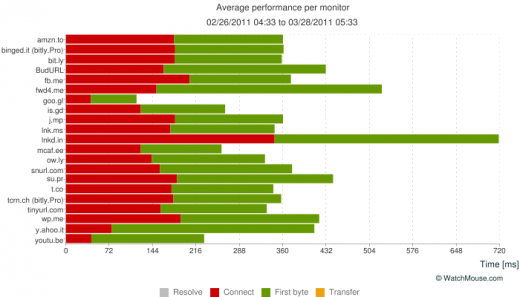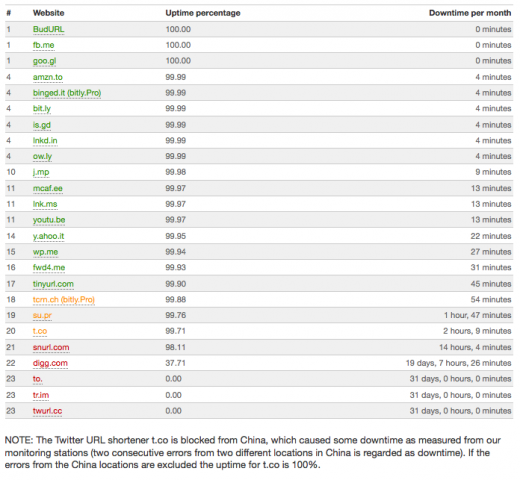
All URL shorteners are far from equal. That’s what new data from online performance monitoring service Watchmouse finds.
Measuring the uptime of 25 popular shorteners, it found that only three – BUDurl, Facebook’s fb.me and Google’s goo.gl – experienced 100% uptime between February 24 and March 28 2011.
Many of the other URL shorteners tested – including Bit.ly, Is.gd and J.mp – experienced just 4 minutes of downtime through the month. Further down the league, WordPress’ wp.me was down for 27 minutes and tinyurl.com was down for 45 minutes.
The figures show Twitter’s t.co as having suffered a significant 2 hours and 9 minutes of downtime. However, Watchmouse says that this is down to the service experiencing connection errors in China due to the shortener being blocked there. Discounting these errors, t.co achieved 100% uptime.
Digg’s shortening service suffered a startling 19 days, 17 hours and 26 minutes of downtime and we’ve contacted the company for an explanation. Meanwhile, three shorteners – To, Tr.im and Twurl.cc were down for the entire month, indicating that they’re permanently out of action.
When it came to connection speed, Google-run shorteners are the leaders of the pack. Goo.gl and Youtub.be offered the fastest connection speeds. Facebook’s fb.me was by far the slowest shortener when Watchmouse ran the same study one year ago. Now, it’s improved dramatically, with LinkedIn’s Lnkd.in taking the bottom spot with an average connection speed of 720 milliseconds.
While you sometimes have no choice in which shortener you use – YouTube automatically uses its own, for example – it appears that when you can choose, you have a much better chance of a fast, reliable connection to the destination Web page with some over others. You can read the full report, including Watchmouse’s methodology, over here.
Get the TNW newsletter
Get the most important tech news in your inbox each week.






